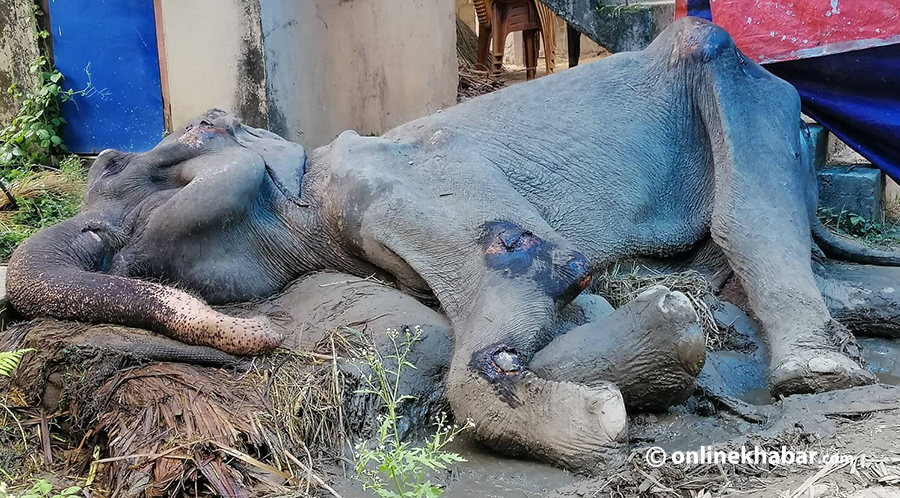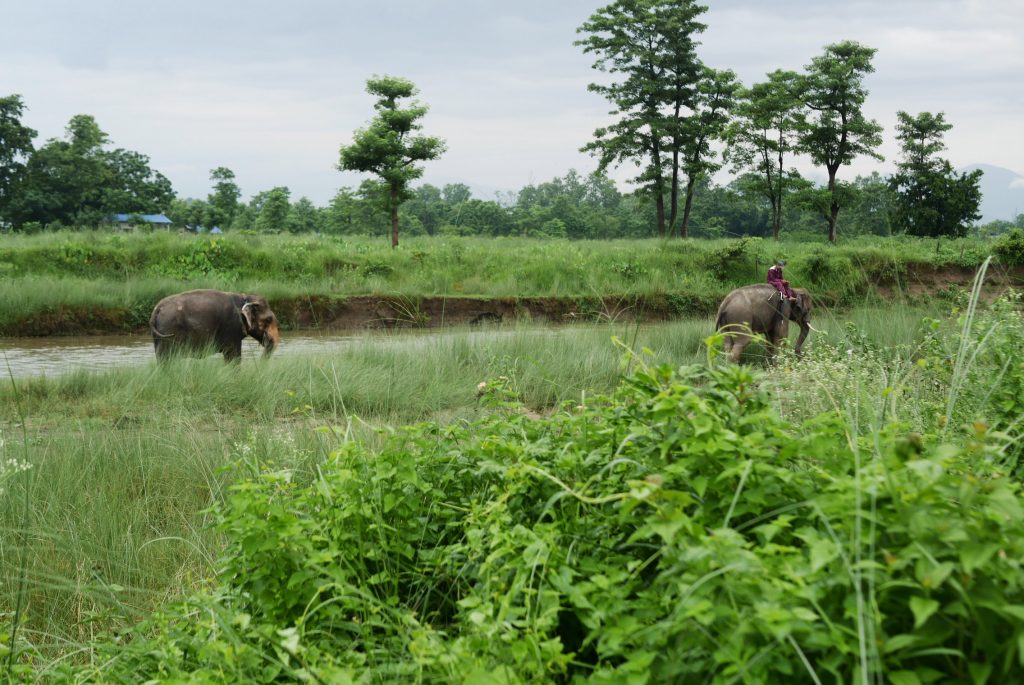There is a spiritual, biological and socio-economic interrelationship between human beings and animals. In Hindu mythology, animals are symbolised as the form of god. Cows, bulls, dogs, lions and crows are considered symbols of Lakshmi, Shiva, Bhairava, Durga and Yamaraja, respectively.
The co-existence of animals and birds is also obligatory to sustain the ecosystem. Human beings utilise animals and birds for companionship, entertainment, research, means of transportation, fertiliser, draft power and as a source of protein-based food. In the due course of human civilisation, different approaches to animal welfare have gained global momentum.
Animal welfare is a multifaceted and intricate concept that can be primarily understood through one of four key frameworks. The first concept revolves around evaluating the physical, mental, and natural well-being of animals.
This involves a comprehensive assessment of their health, emotional state (including fear and anxiety), and their ability to engage in natural behaviours. The second concept is centred on the ‘five freedoms’ framework. These freedoms encompass the absence of hunger, thirst, and malnutrition; the absence of pain, suffering, and illness; the absence of fear and anxiety; the freedom to live in a comfortable environment; and the freedom to express their normal, innate behaviours.
The third concept is rooted in the notion of sentience. Recognising that animals are sentient beings capable of perceiving their surroundings and experiencing various sensations, this concept emphasises the need for humane care and protection to ensure their well-being. It acknowledges that animals learn from their experiences, can feel pain, hunger, thirst, heat, and cold, and are aware of their interactions with other creatures. They also possess the ability to make choices within their environments.
The fourth concept of animal welfare is grounded in fulfilling basic needs. This includes providing animals with essential requirements such as food, water, proper healthcare, and a comfortable shelter to ensure their survival. It’s important to note that animal welfare, animal health, and productivity are closely intertwined. The well-being of animals can directly impact their overall health and productivity.
Balancing these aspects is crucial, ensuring that one is not prioritised at the expense of the others. For instance, providing animals with nutritious food can lead to improved health and productivity. Conversely, neglecting their well-being, such as teasing or depriving them of water, can result in reduced milk production in dairy animals.
Access to clean and hygienic food is a fundamental right for every consumer, and it directly ties into animal welfare. For example, chickens raised in free-range environments tend to produce healthier eggs for human consumption compared to those confined to cages for extended periods.
It is essential to recognise that products derived from animals subjected to cruelty or inhumane treatment are not conducive to human health and well-being. Therefore, promoting and practising good animal welfare is not only ethical but also contributes to the production of healthier and safer food products for humans.
Statutory perspective

Throughout the development of Nepal, significant efforts have been made for the establishment of animal welfare legislation. Since the time of the Malla dynasty, Nepal has had a law against cow slaughter. During the reign of King Ran Bahadur Shah of the Shah Dynasty, the provision of local healers to cure cows/bullocks and punishment to animal handlers in the case of cruel behaviour was adopted.
One of the landmarks of animal welfare in Nepal is the establishment of the first veterinary dispensary (animal hospital) in 1939. The Muluki Act prohibited the slaughter of cows, bestiality and mass animal sacrifice and in the Muluki Act, of 1963, there was a special provision for animals and animal husbandry.
In the Infectious Diseases Control Act, of 1963, provisions to protect animals against infectious diseases have been spelled out. Likewise, the Local Administration Act, of 1971, prohibits slaughtering animals in religious places. Provisions are made to publish notices in the Nepal Gazette in cases where it is necessary.
The National Parks and Wildlife Conservation Act, of 1972, promotes animal welfare by protecting wild animal species. The Drug Act, of 1978, provides for quality regulation of medicines used in livestock. The District Development Committee, Municipalities and Village Development Committee Act, 1990, paved a legal way to ensure the availability of drinking water, veterinary dispensaries, Kanji houses and slaughterhouses.
The Constitution of the Kingdom of Nepal, 1990, included the protection of endangered wildlife species. The membership of Nepal to the World Organization of Animal Health (WOAH) in 1997 is another achievement to ensure animal welfare in the country. Animal Health and Livestock Services Act, 1998, regulates animal husbandry and makes legal provisions regarding healthy animals and animal products including export/import.
Nepal Veterinary Council Act, of 1999, provides for the provision of quality veterinary services through registered veterinarians. Animal Slaughterhouse and Meat Inspection Act, 1998, has provisioned humane animal slaughter and health examination of animals before and after slaughter. Currently, the Constitution of Nepal, 2015, has given special attention to the protection of biological diversity and also made a provision on the fundamental rights of consumers to receive quality goods and services.
To ensure that a robust law related to animal welfare is indispensable. The National Offenses (Code) Act, of 2017, prohibits killing or injuring a cow or bull. Punishment for compelling an animal with illness, injury, or disability to work feeding toxic substances or torturing or abandoning a sick or old animal in public places or other cruelty is ensured.
The Local Government Operation Act, of 2017, ensures that the local level shall manage the activities related to the control of stray animals, management of live animal markets, control of livestock and poultry outbreaks and epidemics, management of veterinary services, protection of biological diversity, animal husbandry and animal health. Pesticides Management Act, of 2019, aims to control the adverse effects of the production, storage, and use of pesticides on livestock.
Animal Health and Livestock Services Entrepreneurs Council Act, 2022, has made necessary arrangements to ensure the quality of the services of paraprofessionals other than registered veterinarians. Along with the long list of legislative measures, in the past two decades, the contribution of organisations directly and indirectly involved in the field of animal welfare in Nepal is also worthy. Cooperation and coordination are indispensable for the continuation of these organisations’ activities in Nepali society.
Existing Issues against animal welfare

Although there is an interdependent relationship between animals and humans, human beings are found to behave inhumanely when utilising animals to fulfil their needs. The issues of existing animal welfare in Nepal can be summarised as follows.
1. Animal abandonment: Elderly animals, animals suffering from chronic diseases and others are often abandoned. It is also said that female dogs are selectively abandoned, and then male calves are left on the road or are made to die. Problems such as stray animals eating agricultural crops causing damage to vehicles and causing accidents on the roads are encountered periodically.
2. Animal mutilation and related cruelty: Transporting chickens hanging upside down in motorcycles, killing animals or birds improperly to control outbreaks, reckless driving causing bodily harm to animals and inhumane treatment practices that increase pain and injury are rampant in our society.
3. Wildlife animal welfare issues: Wildlife habitats are being encroached upon by bushfire, grazing, ploughing, settlement and commercial farming. Wildlife poaching, trafficking, captive wildlife, and health problems have also become important issues.
4. Problems in animal transport: Inhumane and inappropriate means of transport are used. Animals are compelled to suffer during transportation in a painful manner by tying their tails, hanging them, dragging them etc.
5. Inhumane slaughter: Animals are slaughtered inappropriately by neck stab method in religious places and slaughterhouses.
6. Lack of access to veterinary care: Many livestock in Nepal, especially in rural areas, lack access to proper veterinary care.
7. Inhumane management of community dogs: There is an easy mixing of owned and community dogs and there is no planned rabies control program. Community dogs suffer from malnutrition, diseases and injuries, especially in urban areas.
8. Problems of working animals: Animals used for work are subjected to continuous work for a long time, carrying more weight or weight than they can handle, negligence to provide extra feed, compelling sick animals to work and also physical abuse in some instances.
9. Animal welfare issues of laboratory and research animals: The misuse of animals in laboratory and research centres, as well as unethical treatment and handling of such animals, can also be observed within the Nepali context.
Remedial actions

Though there are issues regarding the welfare of animals, there are remedies too. The actions that should be taken for the welfare of animals are listed below:
1. Management of specialised vehicles for livestock and poultry transportation.
2. Adoption of scientific methods of humane slaughtering in animal slaughterhouses.
3. Provision of painless death/euthanasia in animals as needed.
4. Enhancing availability and accessibility of national veterinary services.
5. Development and regulation of livestock registration system.
6. Rabies control and regulation of responsible dog ownership.
7. Control, prevention and eradication of infectious diseases of livestock.
8. Use of insemination techniques through sexed semen to produce female calves only.
9. Implementation of animal welfare-friendly curriculum in schools, educational institutions and universities.
10. Formulation and regulation of specialized laws related to animal welfare.
11. Effective implementation, monitoring and evaluation of existing laws.
12. Implement a reliable animal rescue policy.
13. Promotion of organic livestock production/agricultural production.
14. Human-animal conflict management.
15. Climate Change Adaptation and Environmental Protection.
16. Forest conservation, wildlife conservation and standards management.
17. Appropriate regulation of animals used in laboratory and research.
18. Conducting public awareness activities related to animal welfare.
Call for empathy

Nepal is a developing country that is struggling to reduce poverty and achieve food security. The role of animal husbandry in the country’s economy is important. Wildlife also contributes greatly to Nepal’s economy and biodiversity.
Therefore, it is very important to improve animal health, animal welfare and animal productivity in the livestock sector, which plays a large role in achieving the expected sustainable development goals.
The general public, civil society, consumers, non-governmental organisations, cooperatives, private sector, entrepreneurs, professionals, researchers, educational institutions, universities, federal/provincial/local government, policy and regulatory bodies, and lawmakers should take active action in animal welfare.
If a separate animal welfare law can be promulgated and implemented following the existing provisions regarding animal welfare, it is certain that the animal welfare situation in Nepal will improve and animal health problems will be minimised.
This will give success to the Nepali society as moral, civilised, cultured. Therefore, for the welfare of animals, everyone’s action is necessary towards the foundation of a specialised law on animal welfare to end all kinds of unfair treatment towards animals.
Although various programs are being conducted by the government and non-government sectors for animal welfare, it is necessary to create awareness among the general public about animal welfare.
The post Animal welfare in Nepal is waiting for a proper act. Will the govt draft one to save them? appeared first on OnlineKhabar English News.
Comments
Post a Comment